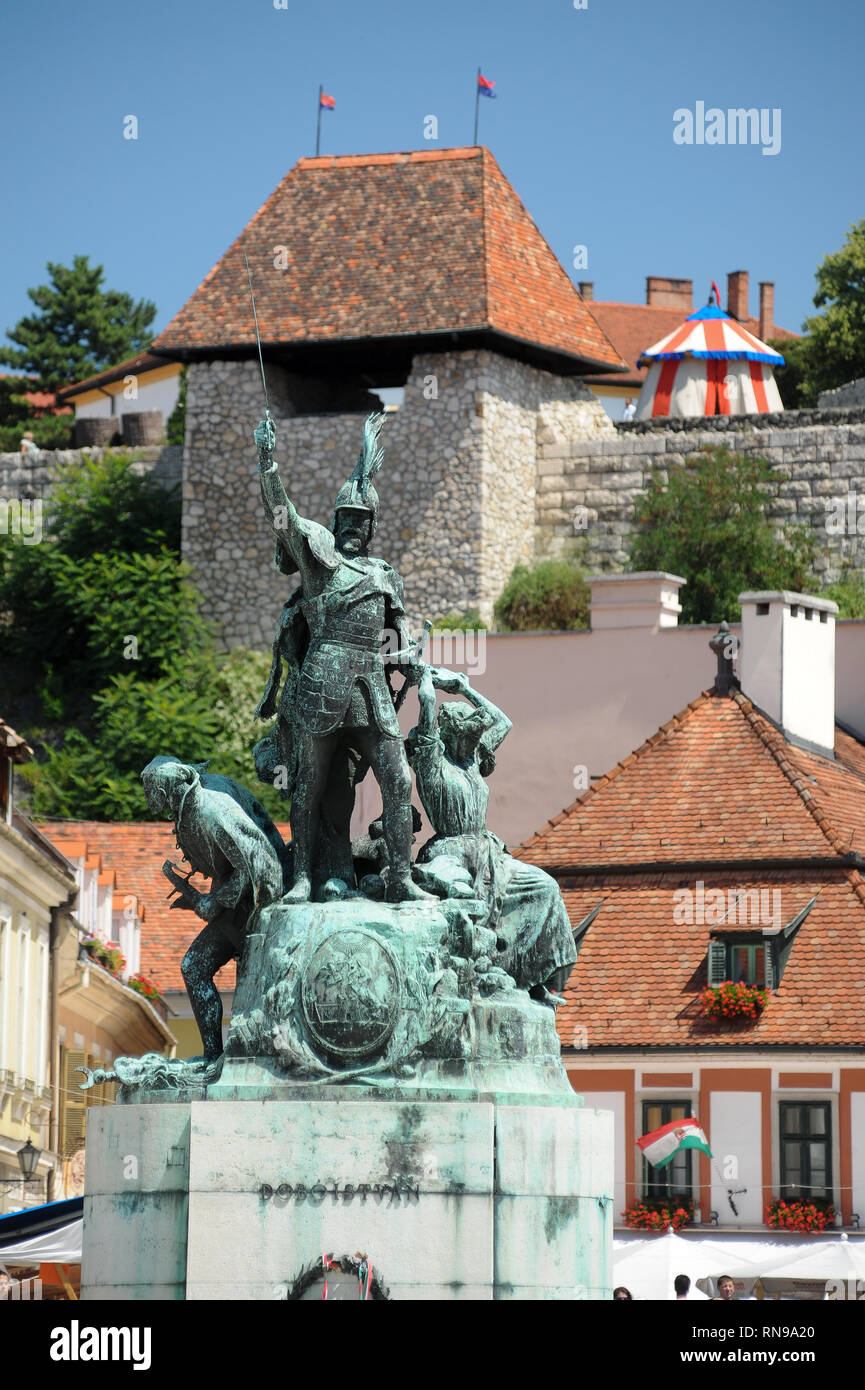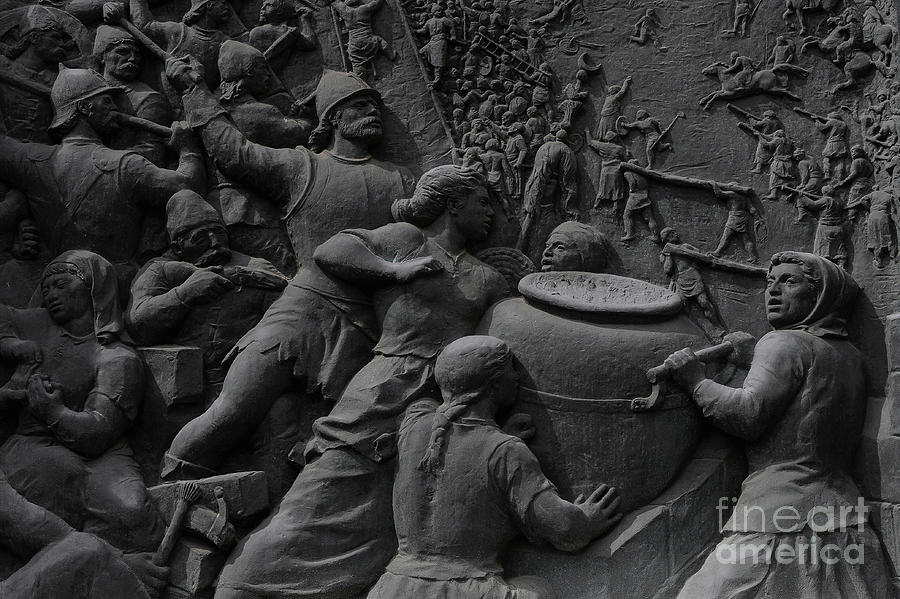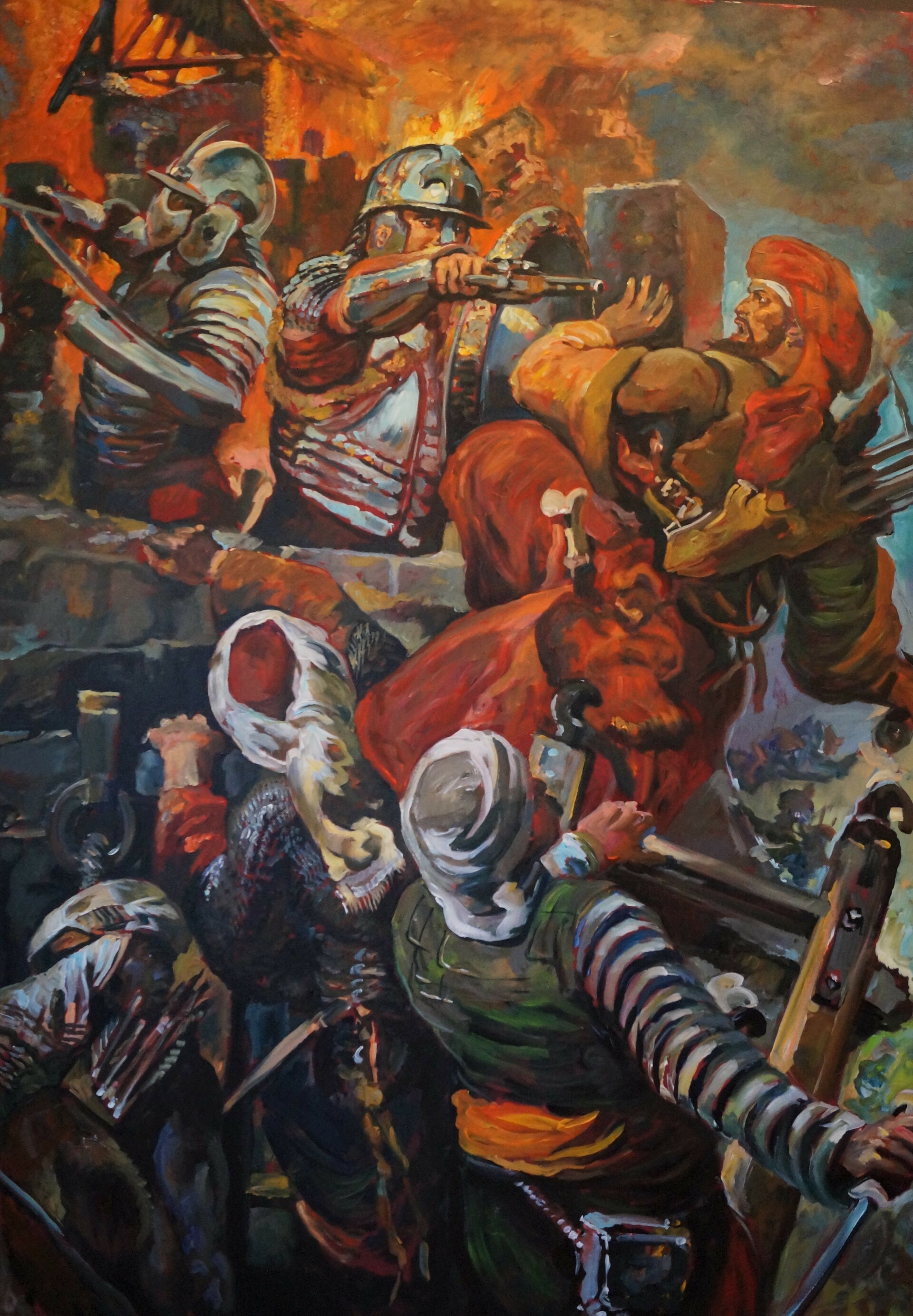
1552 siege of eger hires stock photography and images Alamy
Eger (UK: / ˈ ɛ ɡ ər / EG-ər, US: / ˈ eɪ ɡ ər / AY-gər; Hungarian: ⓘ; also known by other alternative names) is the county seat of Heves County, and the second largest city in Northern Hungary (after Miskolc).A city with county rights.Eger is best known for its medieval castle, thermal baths, baroque buildings, the northernmost Ottoman minaret, and red wines.

About a hero named István Dobó and the siege of Eger castle in Hungary
The Siege of Eger occurred during the 16th century Ottoman Wars in Europe. In 1552, the forces of the Ottoman Empire led by Kara Ahmed Pasha laid siege to the Castle of Eger, located in the northern part of the Kingdom of Hungary, but the defenders led by István Dobó repelled the attacks and defended the castle, despite being outnumbered approximately 1 to 17.

Women fight alongside men to withstand 1552 Siege of Eger in Hungary Photograph by Terence Kerr
Siege of Eger (1552) Coordinates: 47°54′14.04″N 20°22′45.84″E Eger Castle in the 16th century Walls of Eger Castle Siege of Eger Castle The siege of Eger ( Hungarian: Eger ostroma) occurred during the 16th century Ottoman wars in Europe.

Women With Cauldron Of Hot Soup, 1552 Siege Of Eger Relief, Eger Castle, Heves County, Hungary
Back in 1552, this mighty fortress was the stage of the Battle of Eger, where a small band of 2,000 Hungarian defenders, against all odds, bravely held off an imposing Ottoman army of 80,000. This heroic stand still resonates today, a rich tale of courage and resilience woven into Hungary's national identity. Every stone of the Castle of Eger.

KollarzVizkelety Siege of Eger Stock Photo Alamy
The Siege of Eger in North-Central Hungary (not to be confused with Cheb in the Czech Republic, named Eger in German) was a victory celebrated across Europe at the time, and even Ottoman sources spoke openly about a big loss. On the longer run however, it didn't change the strategic situation, and was forgotten quickly.

Eclipse of the Crescent Moon The 1552 Siege of Eger Castle TrespasseronEarth
The Little War Siege of Eger Castle. Source: Wikipedia The beginning of the 16th century for Hungary was a time of near-constant conflict. The period from 1529 to 1552, known as the Little War, was marked by several major battles. During those battles, both the Ottoman Empire and the Habsburg dynasty suffered immense casualties.
Illustration of the whole engraving (the siege of Cheb/Eger). Download Scientific Diagram
The Siege of Eger occurred during the 16th century Ottoman Wars in Europe.In 1552 the forces of the Ottoman Empire led by Kara Ahmed Pasha laid siege on the Castle of Eger, located in the northern part of the Kingdom of Hungary, but the defenders led by István Dobó repelled the attacks and defended the castle. Later, the siege has become an emblem of national defense and patriotic heroism in.

Brave defenders hold out in 1552 Ottoman siege of Eger Castle, Heves County, Hungary Photograph
The Battle of Keresztes (also known as the Battle of Mezőkeresztes) ( Turkish: Haçova Muharebesi) took place on 24-26 October 1596. It was fought between a combined Habsburg - Transylvanian force and the Ottoman Empire near the village of Mezőkeresztes ( Turkish: Haçova) in modern-day northern Hungary.

Siege of eger hires stock photography and images Alamy
CULTURE & SOCIETY The Triumph of the Hungarian Heart Over the Ottoman Crescent — 471 Years Since the Siege of Eger The Siege of Eger in 1552 by Béla Vízkelety Wikimedia Commons For generations, the heroic deeds of the defenders of the Eger Castle have given the Hungarian people strength and fortitude.

Eger 2
The Ottomans launched a siege of Eger (Turkish: Eğri), that lasted from September 20 to October 12, 1596, as part of the Long War, successfully conquering it after the 7,000 defenders of the fortress, mostly foreign mercenaries, were killed by the Ottoman forces commanded by the Sultan Mehmed III himself. (en) The Ottomans launched a siege of.

Siege of Eger castle 1552 Writers and poets, Detective story, Film
The Ottomans laid siege to the city of Eger which launched a siege of Eger (Turkish: Eğri), that lasted from September 20 to October 12, 1596, as part of the Long War, successfully conquering it after the 7,000 defenders of the fortress, mostly foreign mercenaries, were killed by the Ottoman forces commanded by the Sultan Mehmed III himself who.

Eisenhut Ferencz Franz Scene from the Siege of Eger Hungary Hungarian School 19th Century
The Italian historiographer reporting on the Ottoman siege of Eger in 1552, Ascanio Centorio degli Hortensi presented two episodes to illustrate the valiance and heroism of the women of Eger. Footnote 22 The author emphasizes the heroic deeds of two of the women fighting like lionesses. One young girl, whose mother had just died from being hit.

Ottomanhungarian wars hires stock photography and images Alamy
Kara Ahmed Pasha laid siege to the Castle of Eger, located in the northern part of the Kingdom of Hungary, but the defenders led by István Dobó repelled the attacks and defended the castle. The siege has become an emblem of national defense and patriotic heroism in Hungary.

The Siege of Eger, 1552 Hungarian History Project YouTube
Article Updated: October 29, 2023 - 0 The Castle of Eger. Thaler Tamas, CC BY-SA 4.0, via Wikimedia Commons Home Castles When reading about the history of Europeans and Ottomans, you are bound to come across Eger Castle. It played a notable role in building the defense of the Christian empire against the Ottomans.

The Siege of Eger (1552), in which 2,000 Hungarians fought with close to 35,00040,000 Turk
Go to http://squarespace.com/kingsandgenerals to get a free trial and get 10% off your first purchaseOur animated historical documentary series on the Ottoma.

ArtStation Siege of Eger castle 1552
The Ottomans laid siege to the city of Eger which launched a siege of Eger , that lasted from September 20 to October 12, 1596, as part of the Long War, successfully conquering it after the 7,000 defenders of the fortress, mostly foreign mercenaries, were killed by the Ottoman forces commanded by the Sultan Mehmed III himself who had arrived with the main Ottoman Army from Constantinople.